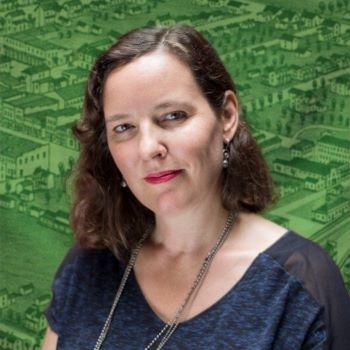
Defining, questioning and celebrating the ever-adaptive world of interactivity was the goal when Laura Chipley and Samara Smith, both associate professors in the SUNY Old Westbury American Studies/Media & Communications department, agreed to participate in the Interactive Film and Media Conference 2024.
Hosted entirely online, the conference annually seeks to explore themes that touch on new narratives, technology, and social engagement, focusing on the transformative impact of digital experiences on the contemporary worldview.
In presenting “Experimental Embodiment: Designing Ecological Spaces and POVs in Virtual Reality,” Chipley and Smith discussed their virtual reality work-in-progress, Virtual Aquapolis. Already having twice earned grant support from the National Endowment for the Humanities, Virtual Aquapolis will be an interactive virtual reality documentary about the history of New York Harbor and the interrelationship between the harbor’s ecosystem and the city above.
“While urban waterways are often considered sacrifice zones, our project examines the diversity and resilience of harbor ecosystems, challenging cultural distinctions between ‘urban’ and ‘natural’ by revealing how human culture works in tandem with the biosphere,” said Smith.
Through their presentation, Chipley and Smith sought to explore and gain insights from other researchers, practitioners, filmmakers, artists, virtual reality and game designers, and media producers in attendance. Participants in IFM2024 represented institutions and organizations across the United States and from such nations as Canada, Ireland, United Arab Emirates, Portugal, India, Italy, and Turkey.
“Virtual reality provides unique opportunities to explore inaccessible spaces, embody non-human forms, and offer radical new perspectives,” explained Chipley. “We were excited to talk about how Virtual Aquapolis showcases the potential for virtual reality to offer novel ways to connect with, or even embody, flora, fauna, environments and ecosystems.”
Informed by experimental film and site-specific installation, Virtual Aquapolis will combine 360°and 2D video with 3D atmospheric sound and interactive objects to create a unique aesthetic and sensory experience that departs from established virtual reality and gaming aesthetics. The planned use point-of- view will offers visitors the opportunity to become the water of the harbor itself: experiencing and exploring the world beneath the surface from the perspective of a collective, vague force.


